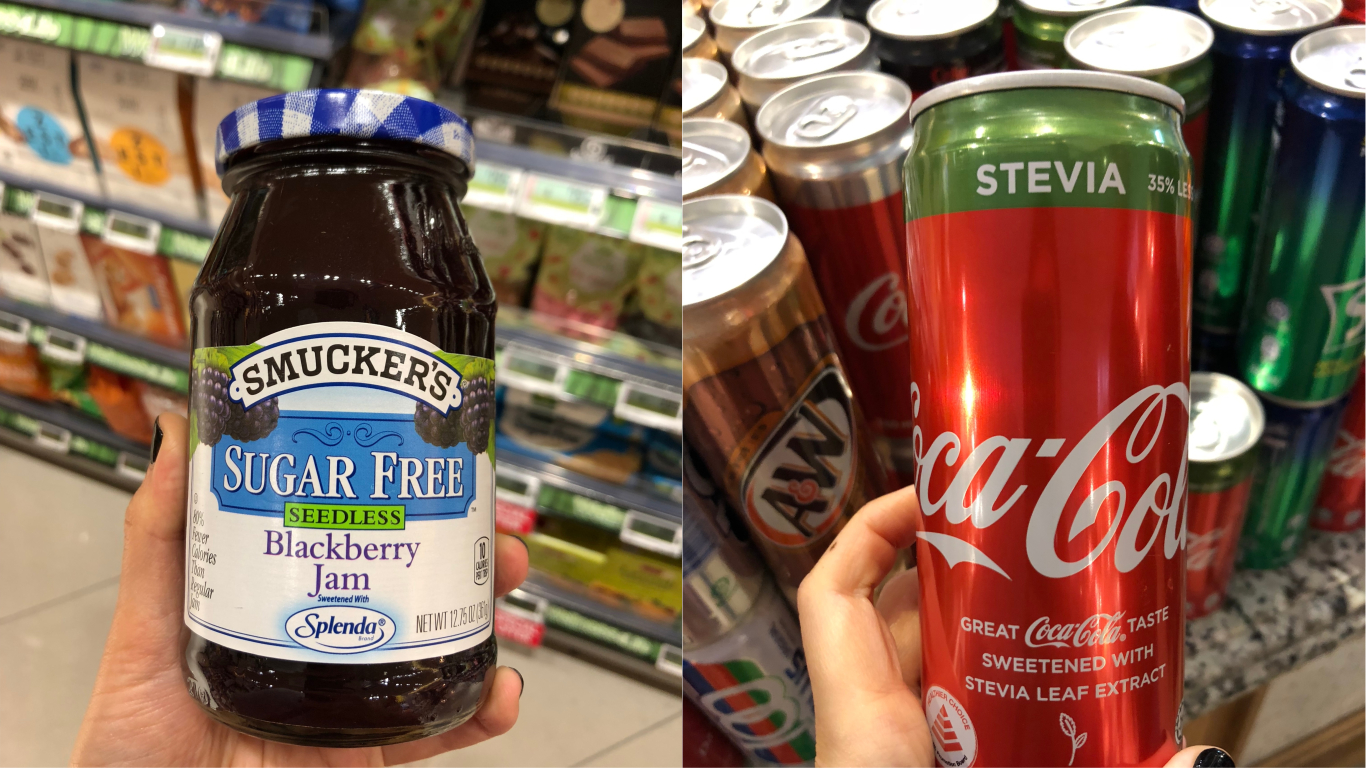Now that there are talks of a tax on sugared beverages, it may soon be worth looking into food options that are either lower in sugar content, or contain artificial sweeteners.
However, there are also a lot of people who think artificial sweeteners are bad just because the word "artificial" is in them.
Why do some people think sugar substitutes are worse than sugar? Why do chemical-y sounding ingredients have such a bad rep?
We try our best to examine this in a non-nutritionist, just-a-regular-consumer-who-reads-a-lot-of-food-labels way.
But before we begin, here's a useful (and summarised) chart we drew for you:
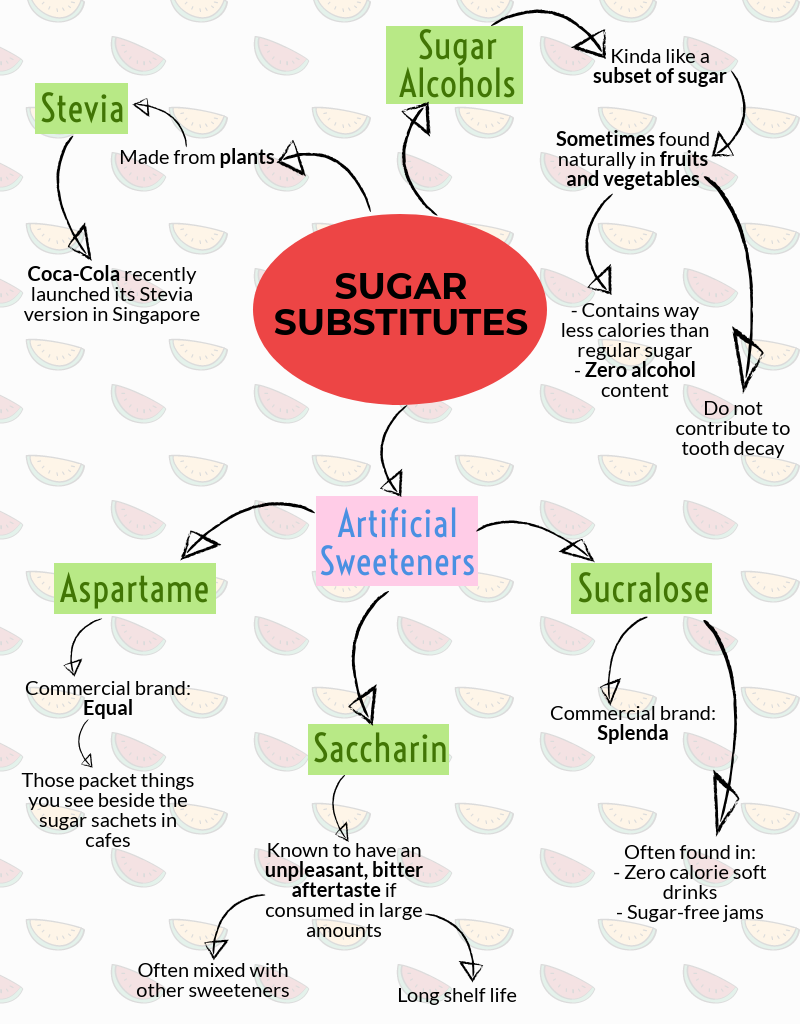 Infographic by Olivia Lin
Infographic by Olivia Lin
Okay, now that you have a rough idea of the different types of sugar substitutes out there and the names to look out for, we'll tell you what sort of real-life products contain those ingredients.
Sucralose
Take this jar of sugar-free blackberry jam.
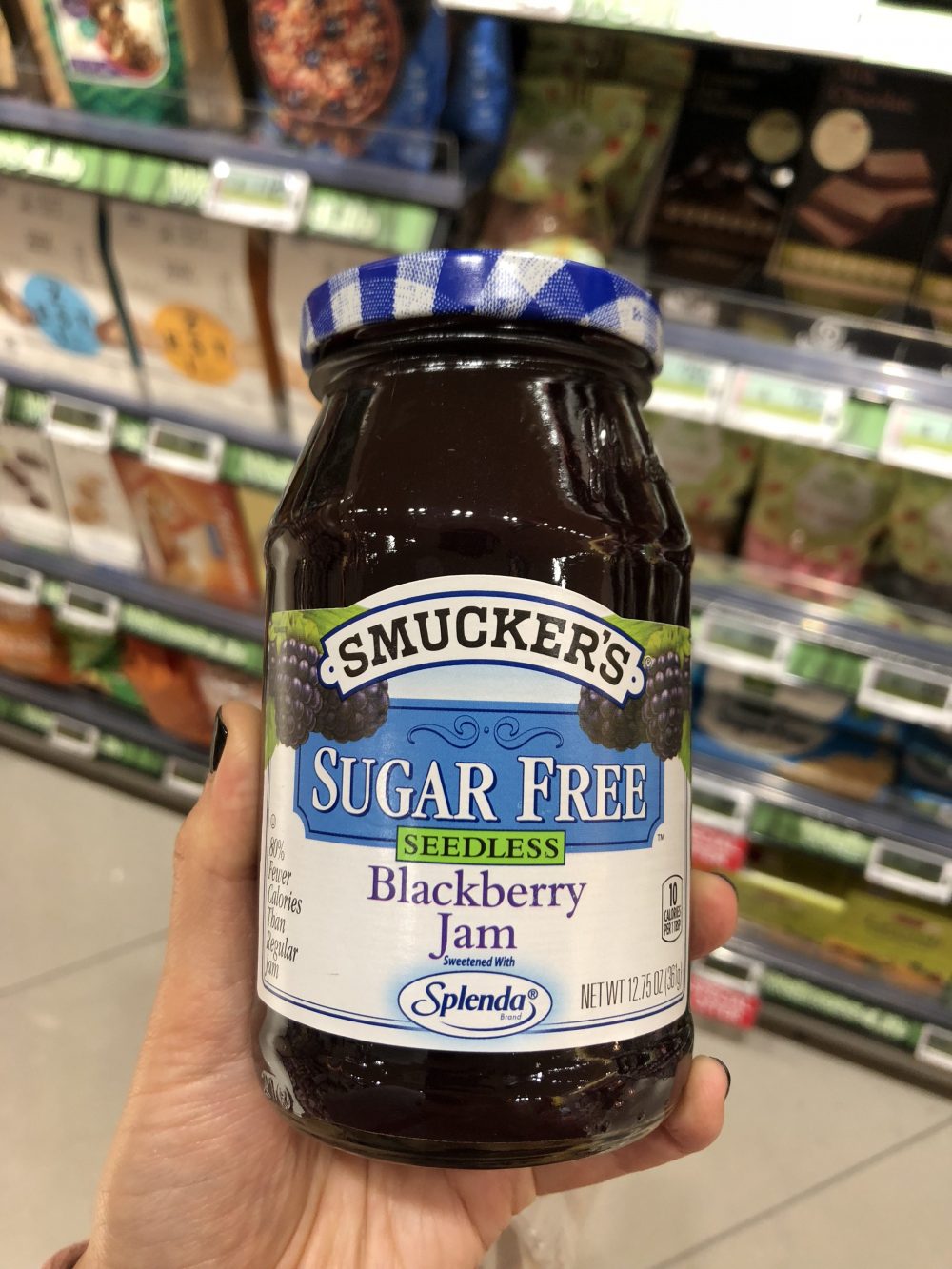 Photo by Olivia Lin
Photo by Olivia Lin
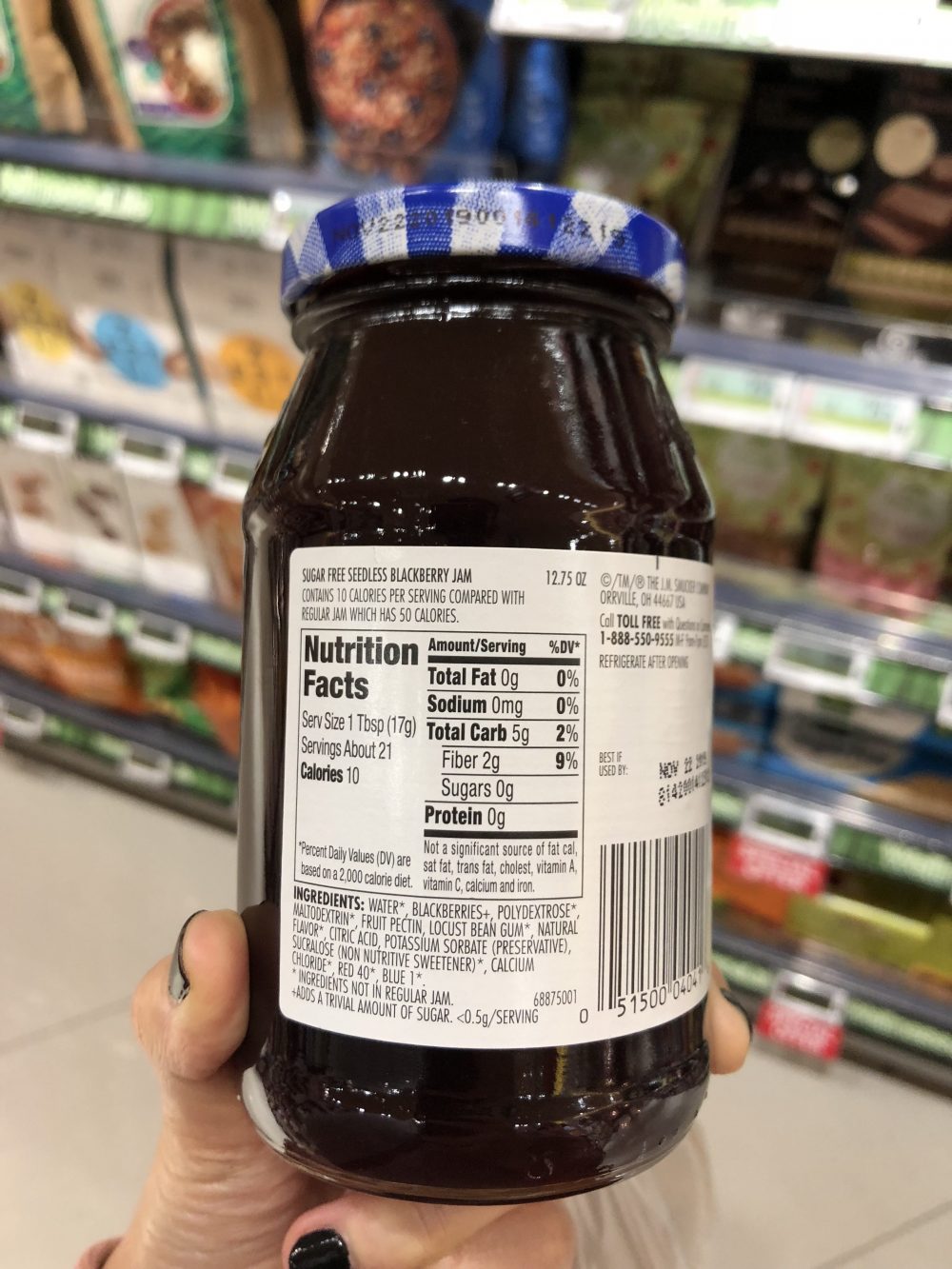 Photo by Olivia Lin
Photo by Olivia Lin
First two ingredients: Water and blackberries. Hmm, sounds good enough, sounds healthy enough.
At S$6.50, this is slightly more expensive than regular jam by the same brand. A jar of regular Smucker's strawberry preserves costs $5.70.
This jar of jam is sweetened with Sucralose, and you can see it labeled as its 10th ingredient.
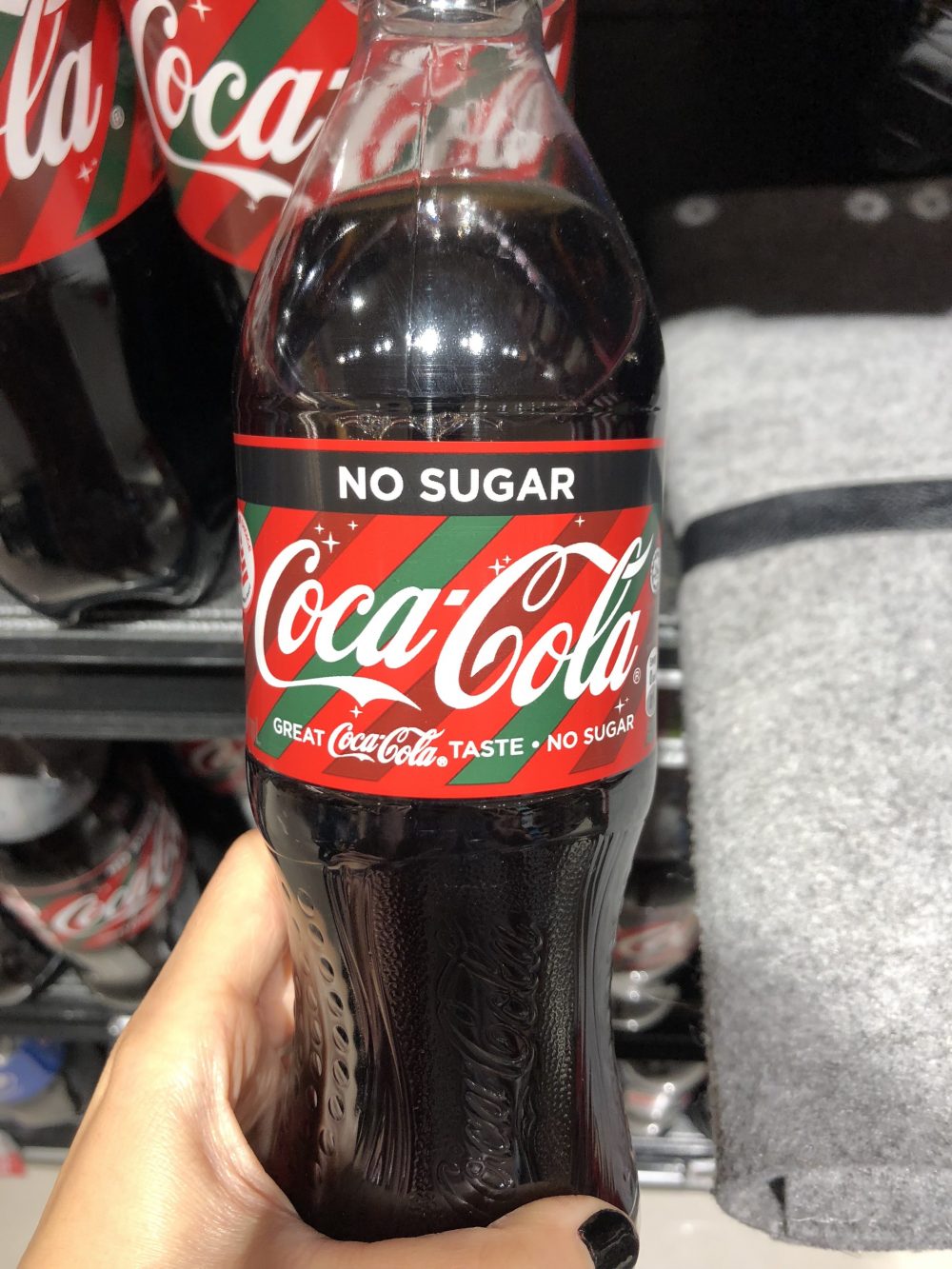 Coke Zero with Sucralose. (Photo by Olivia Lin)
Coke Zero with Sucralose. (Photo by Olivia Lin)
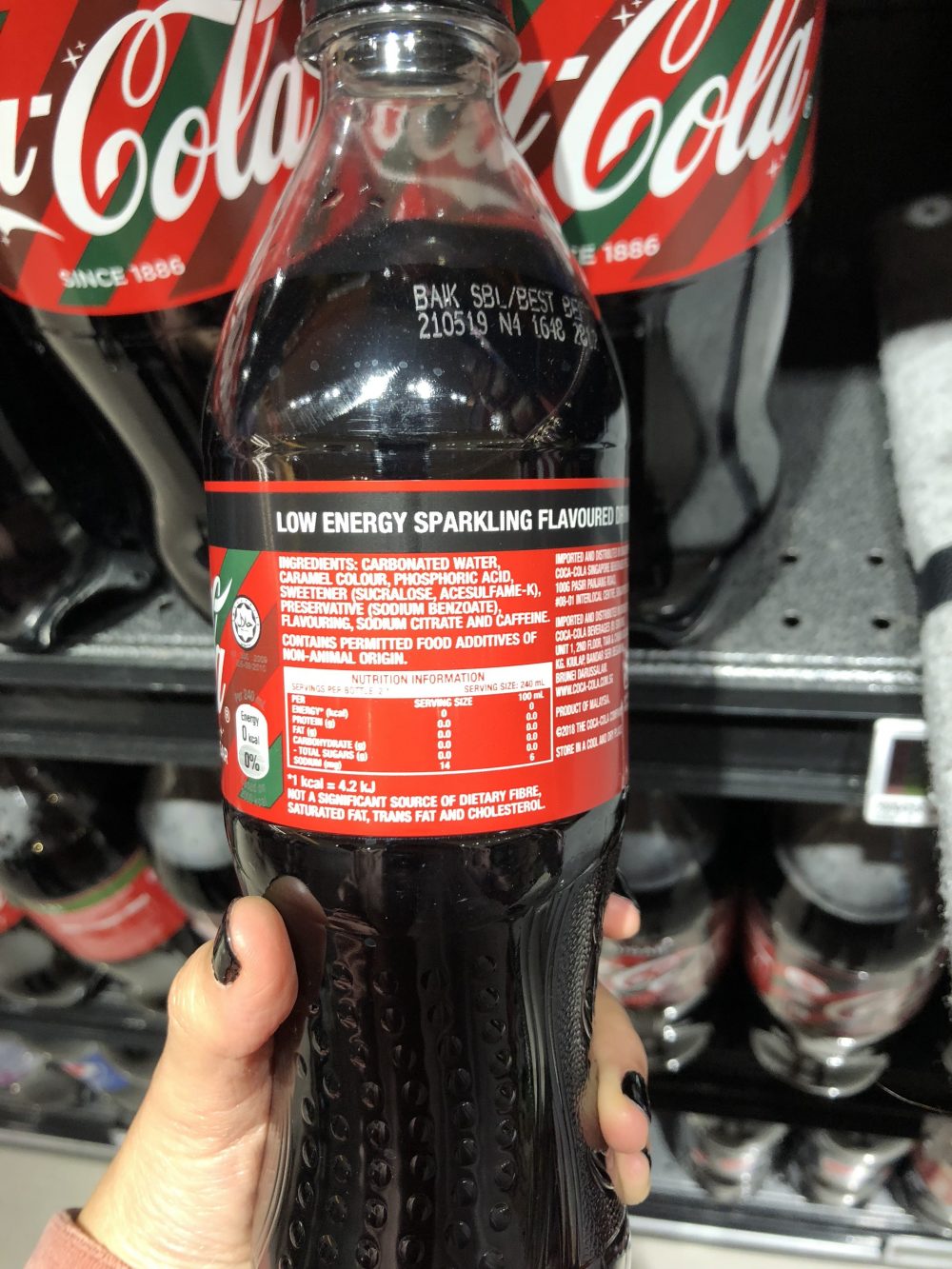 Coke Zero with Sucralose (Photo by Olivia Lin)
Coke Zero with Sucralose (Photo by Olivia Lin)
This bottle of Coke Zero costs S$1.35, which is the same price as the classic Coke, and Coke Stevia.
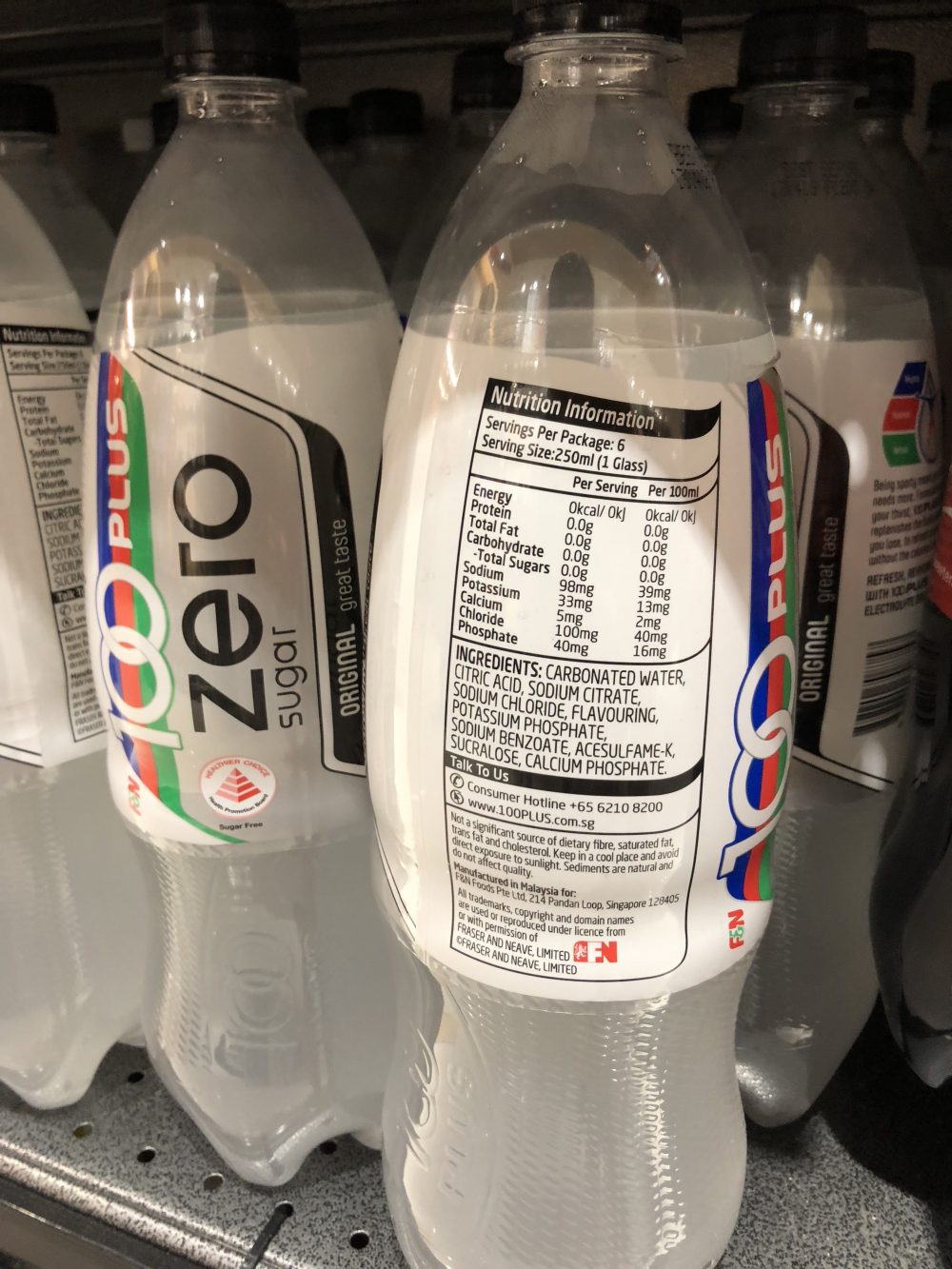 100 Plus Zero with Sucralose (Photo by Olivia Lin)
100 Plus Zero with Sucralose (Photo by Olivia Lin)
Remember Splenda, from the useful infographic chart above?
It's the commercial brand of Sucralose, and on its own, Splenda looks like this.
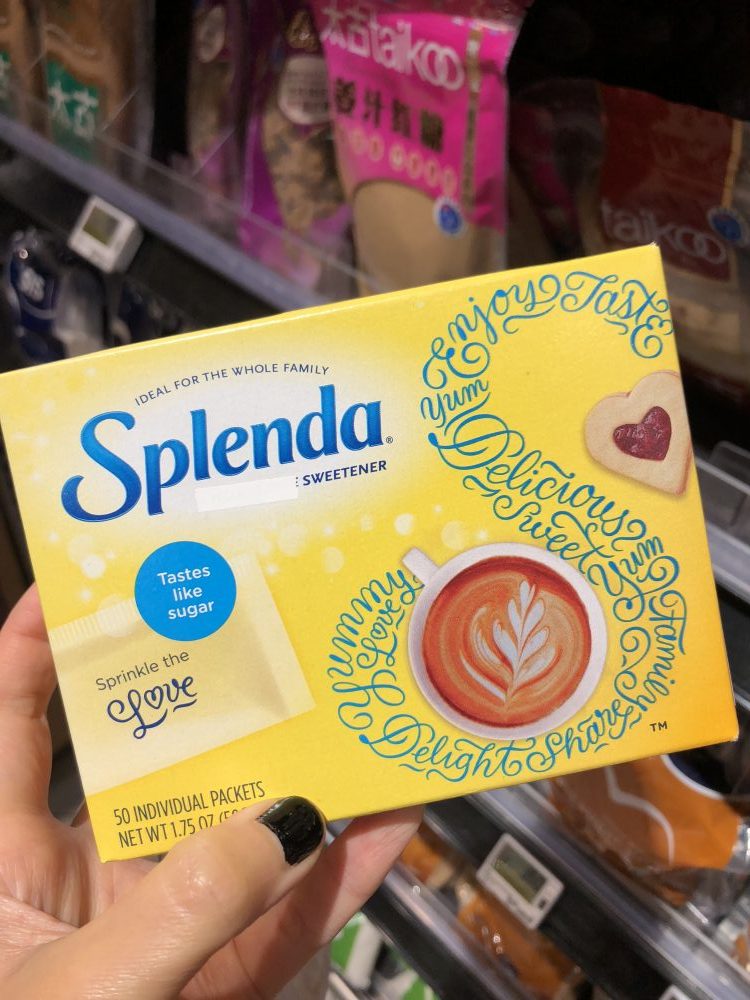 Photo by Olivia Lin
Photo by Olivia Lin
Splenda is often used as a beverage sweetener, especially for coffee and tea.
Possible side effects?
Consuming too much Splenda is known to cause bloating, diarrhea, gas, or have a laxative effect in some people.
Taste
The interesting thing is that Splenda is known to be approximately 600 times sweeter than sugar, but the amount of it present in food provides (almost) zero calories.
Taste-wise, several people have commented that Splenda is a neutral sugar substitute, tasting neither overly artificial, nor anything like the real deal.
Aspartame
You might know Aspartame by its more commercial brand name "Equal":
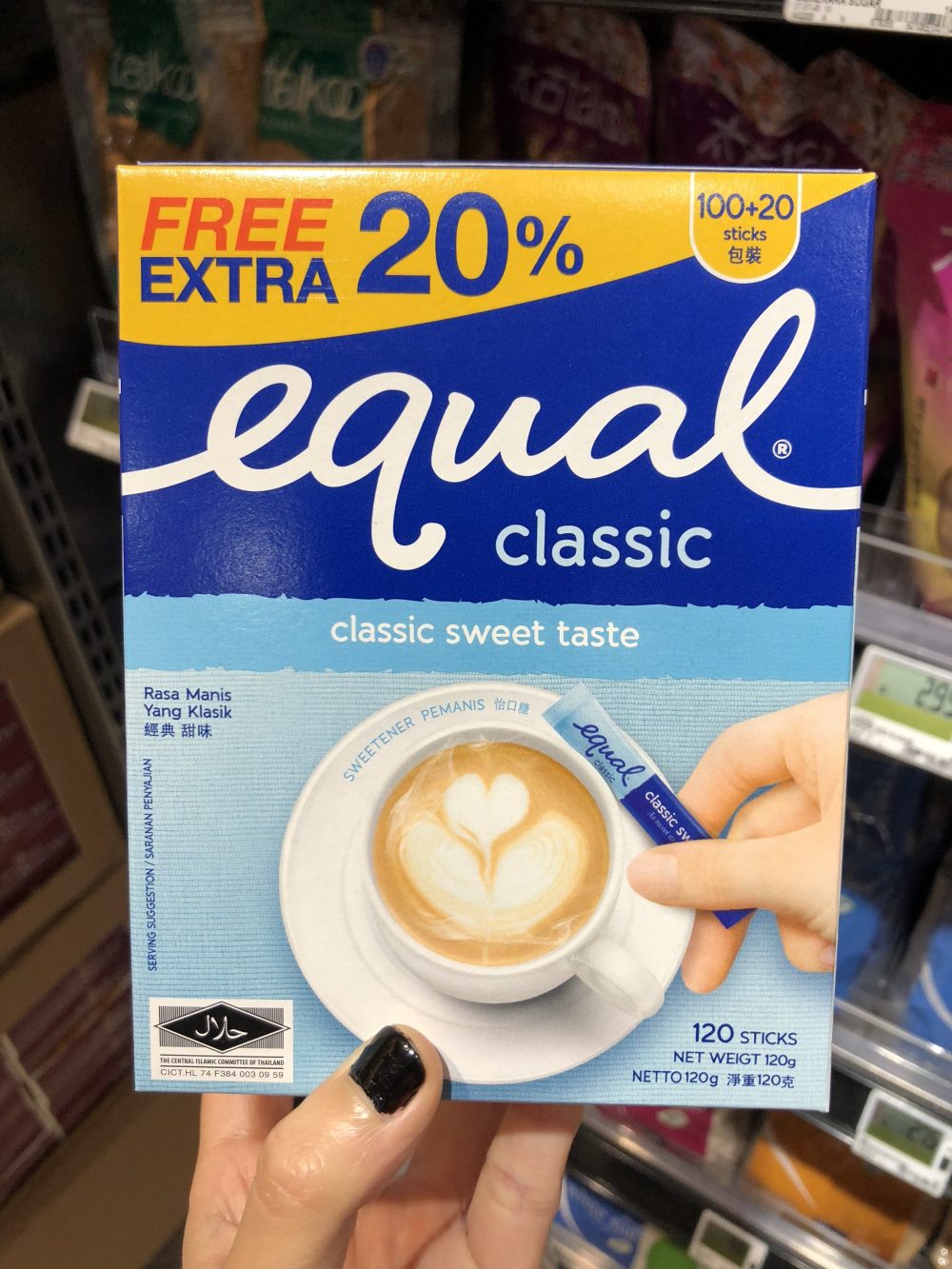 Photo by Olivia Lin
Photo by Olivia Lin
Possible side effects?
Aspartame, the sweetener in Equal, has been under enormous scrutiny since its discovery. According to the American Cancer Society, most studies have found that there's no obvious link between Aspartame and an increased risk of cancer.
However, some people have reported feeling dizzy from consuming it.
Taste
Although it is known to have a slight metallic aftertaste, aspartame is also known to have the ability to enhance the fruit flavours in foods.
Sugar alcohols
The term “sugar alcohol” probably sounds like the most HPB-unfriendly thing but guess what, it isn’t exactly sugar, and it certainly does not contain alcohol.
Sugar alcohols are kinda like a subset of sugar. They are sometimes found naturally in fruits and vegetables, but are also sometimes industrially-produced.
So what sort of food contains sugar alcohol? This sort.
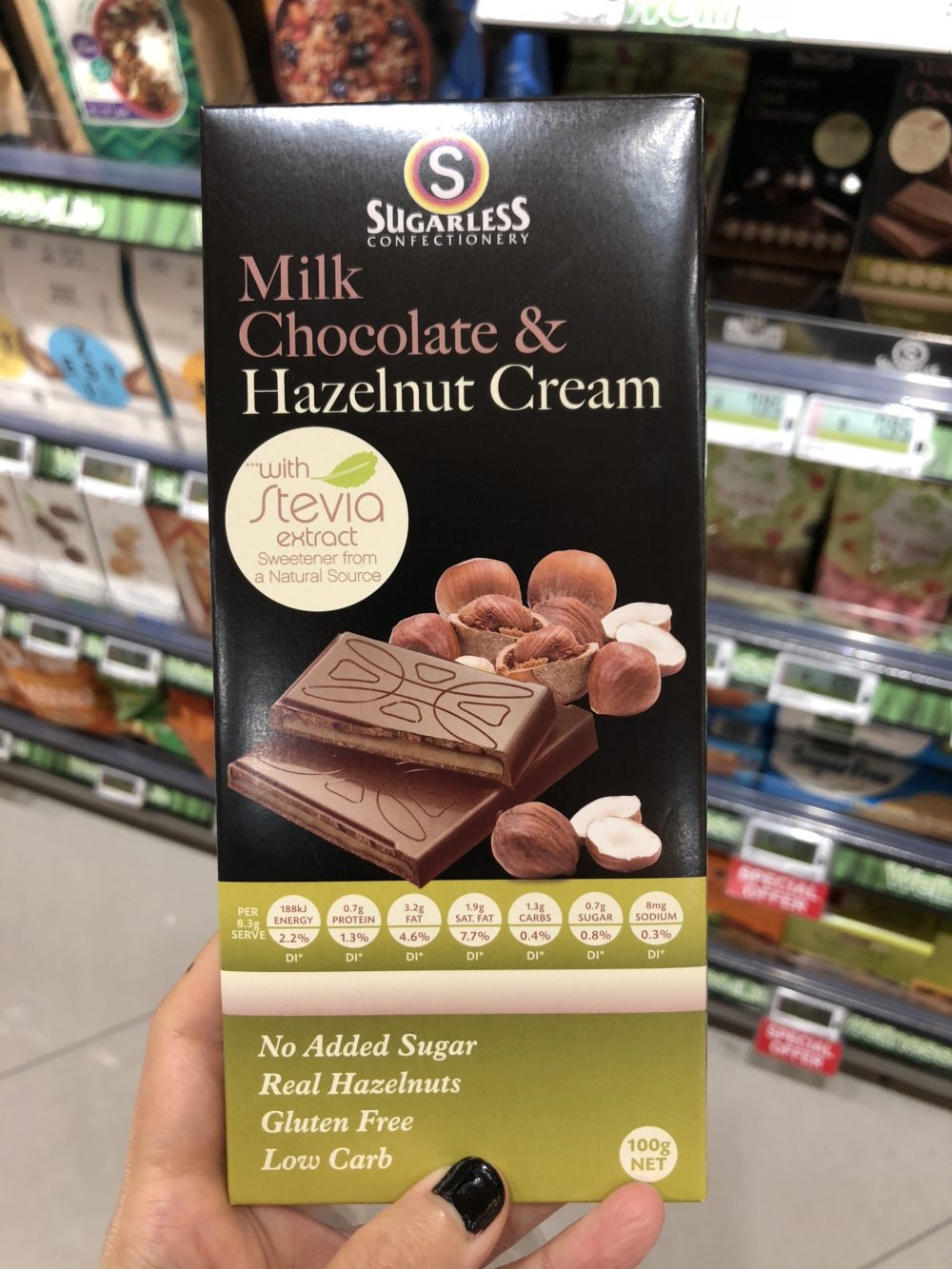 Photo by Olivia Lin
Photo by Olivia Lin
 Photo by Olivia Lin
Photo by Olivia Lin
The sweeteners present in the chocolate bar above are Maltitol (a sugar alcohol), and Stevia.
This 100g chocolate bar costs S$7.95, which is more expensive compared to normal chocolate bars from brands like Cadbury or Nestlé.
Possible side effects?
Like Sucralose (Splenda), an excessive amount of sugar alcohols can cause bloating and diarrhoea. A good side effect of sugar alcohols is that it helps prevent tooth decay.
Taste
As sugar alcohols taste less sweet compared to regular sugar, food companies often combine them with other artificial sweeteners to boost its taste.
Certain types of sugar alcohols (Sorbitol, Xylitol, and Maltitol) are naturally occurring, while some (such as Xylitol) are known to have a minty and cool taste.
Stevia
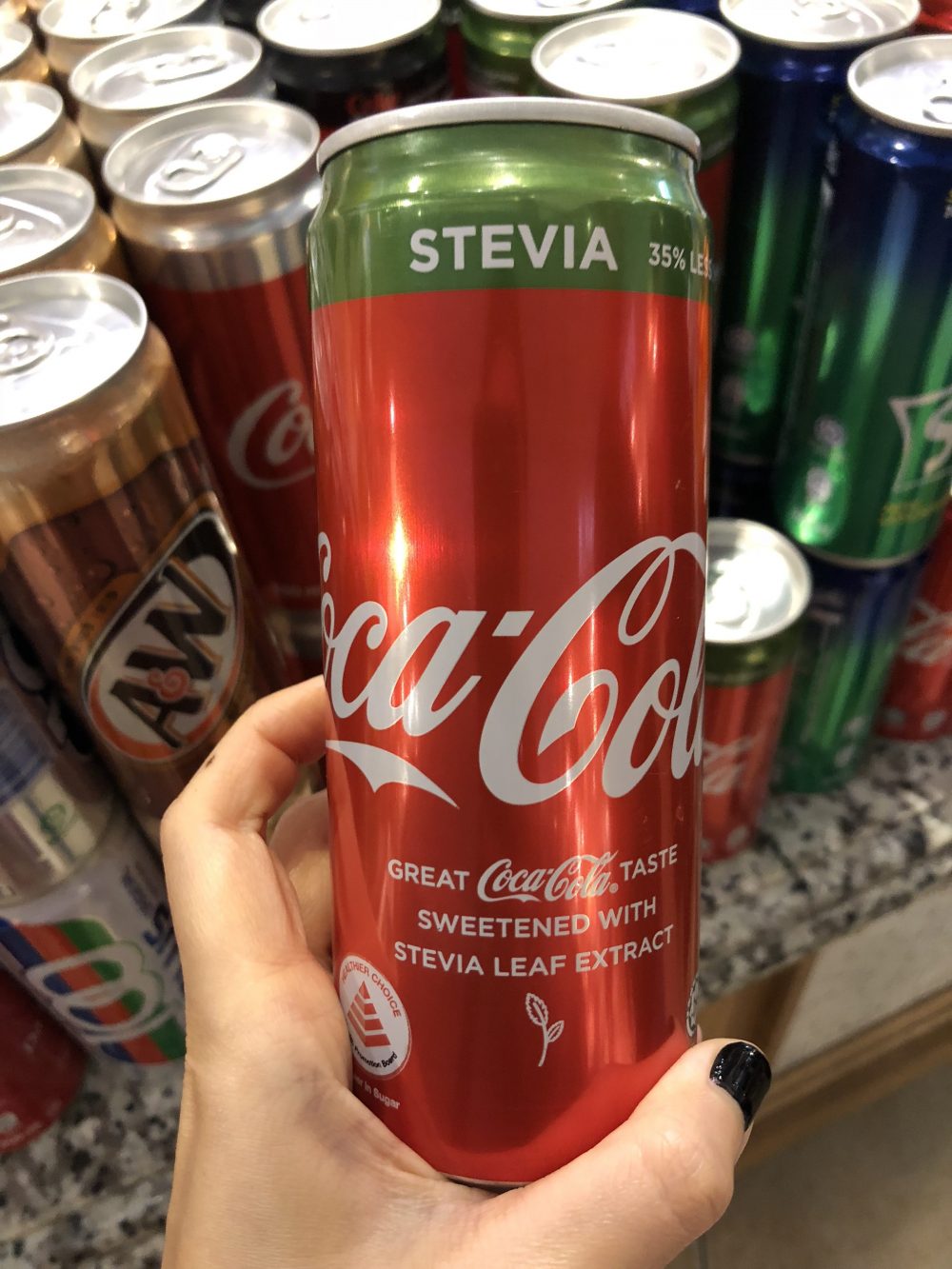 Photo by Olivia Lin
Photo by Olivia Lin
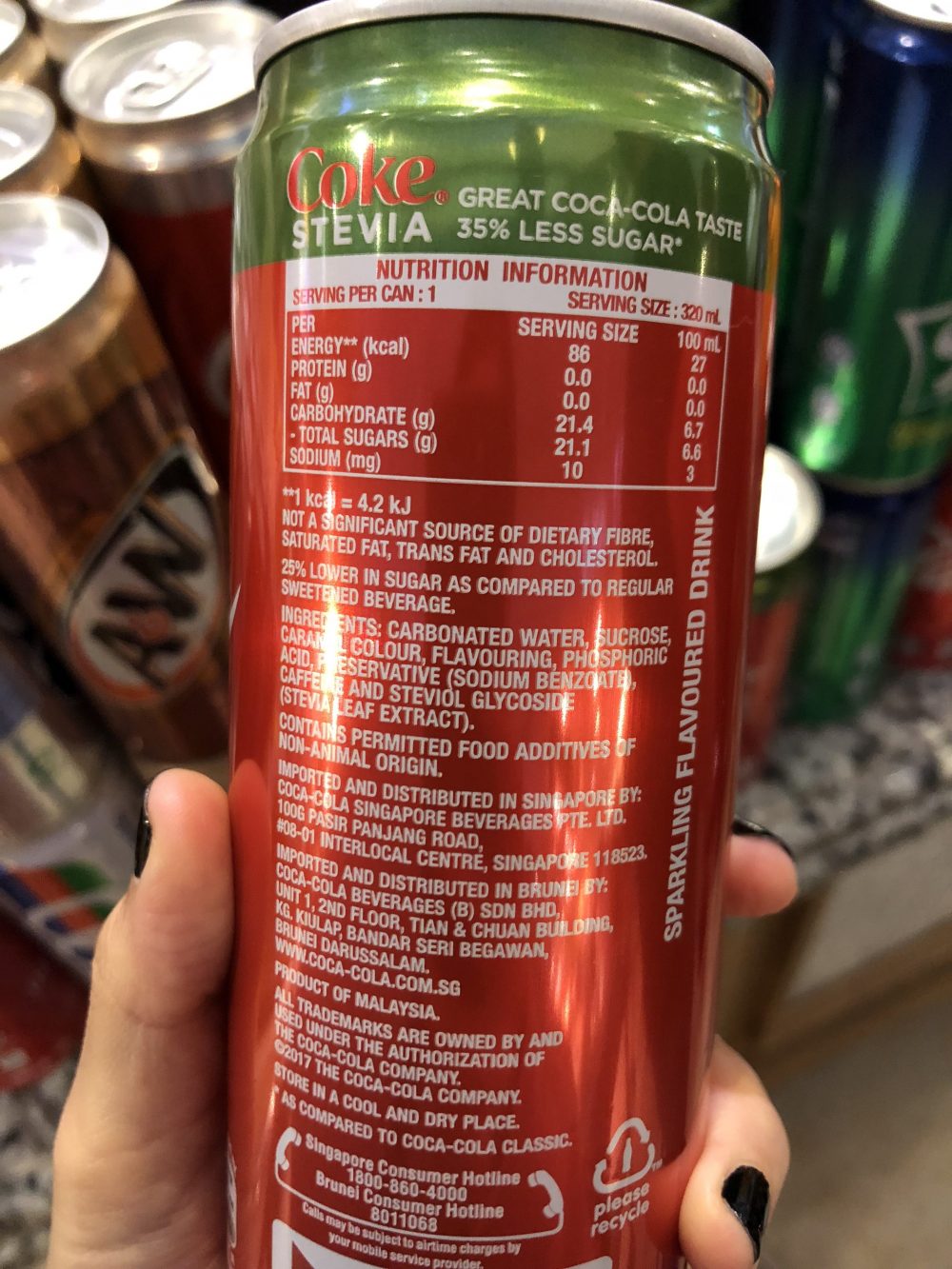 Photo by Olivia Lin
Photo by Olivia Lin
Stevia is a sugar substitute made from a plant species. It can also be purchased on its own in powder or packet form.
At 80 cents for a can, it is the same price as classic Coke and Coke Zero.
Possible side effects?
Although the risk is low, some harmful side effects of Stevia include kidney damage, nausea, and indigestion.
A good side effect is that it does not affect insulin levels, which helps diabetic people manage sugar levels.
Taste
Stevia is known to have a slightly bitter, licorice-like aftertaste.
Regular products with regular sugar
And for the sake of comparison, let's look at the simpler stuff with simpler ingredients.
Here's a jar of regular strawberry jam containing regular sugar.
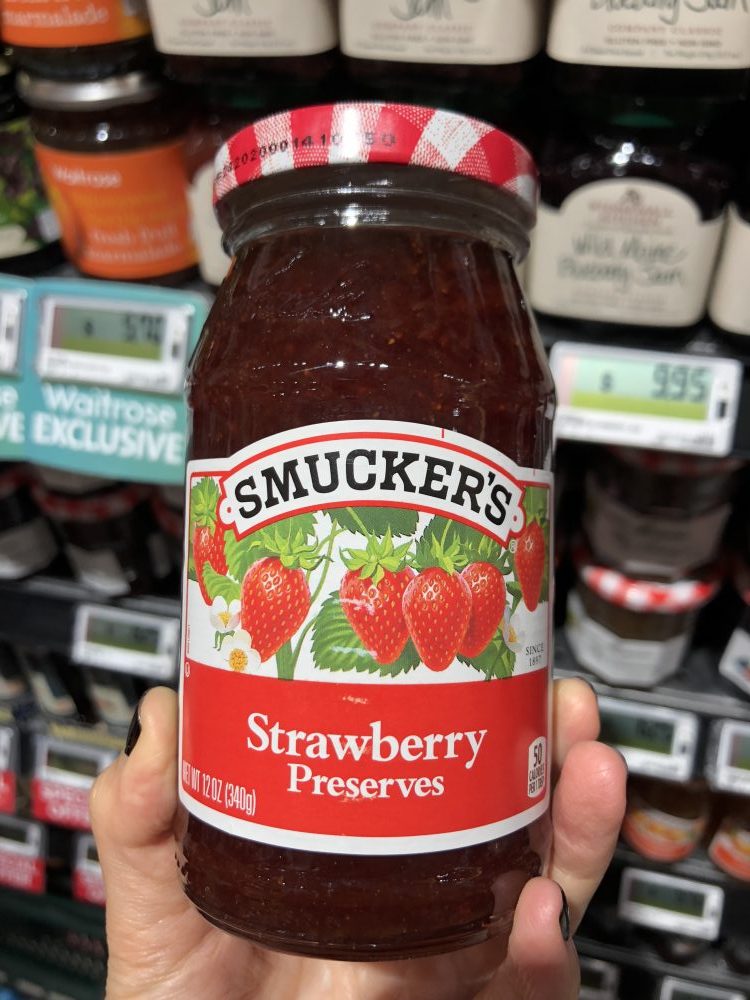 Photo by Olivia Lin
Photo by Olivia Lin
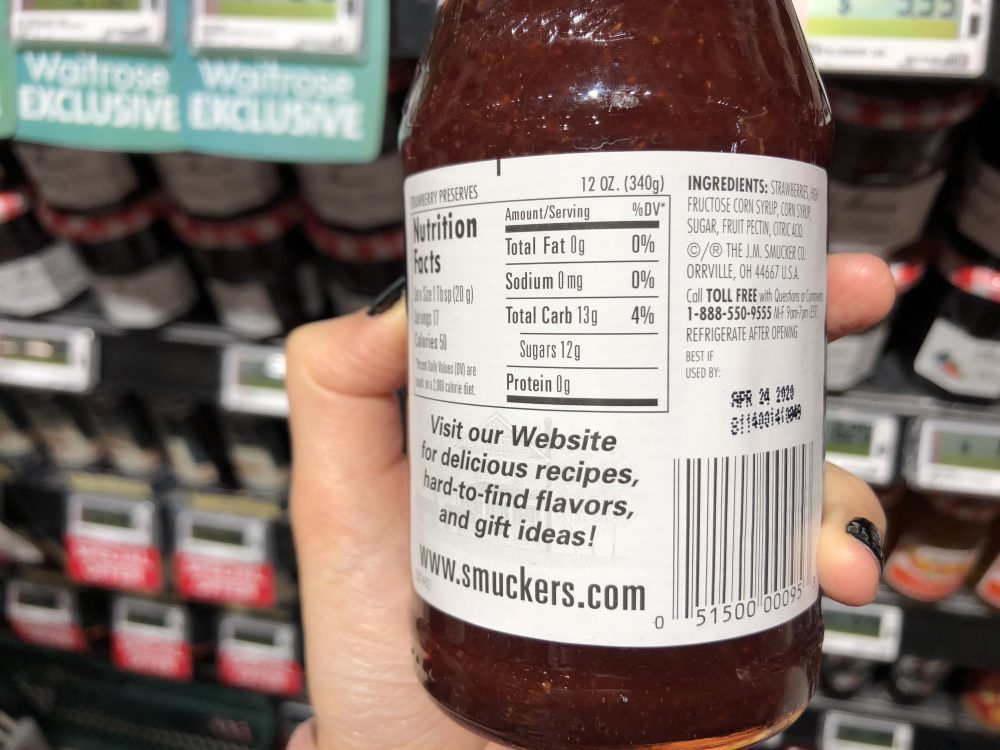 Photo by Olivia Lin
Photo by Olivia Lin
Regular sugar, in this case, means high fructose corn syrup (the second ingredient in the list), which is a natural sweetener made from corn starch.
High fructose corn syrup is commonly found in soft drinks, candy bars, and sauces/condiments.
It is S$5.70 for a jar of regular strawberry jam.
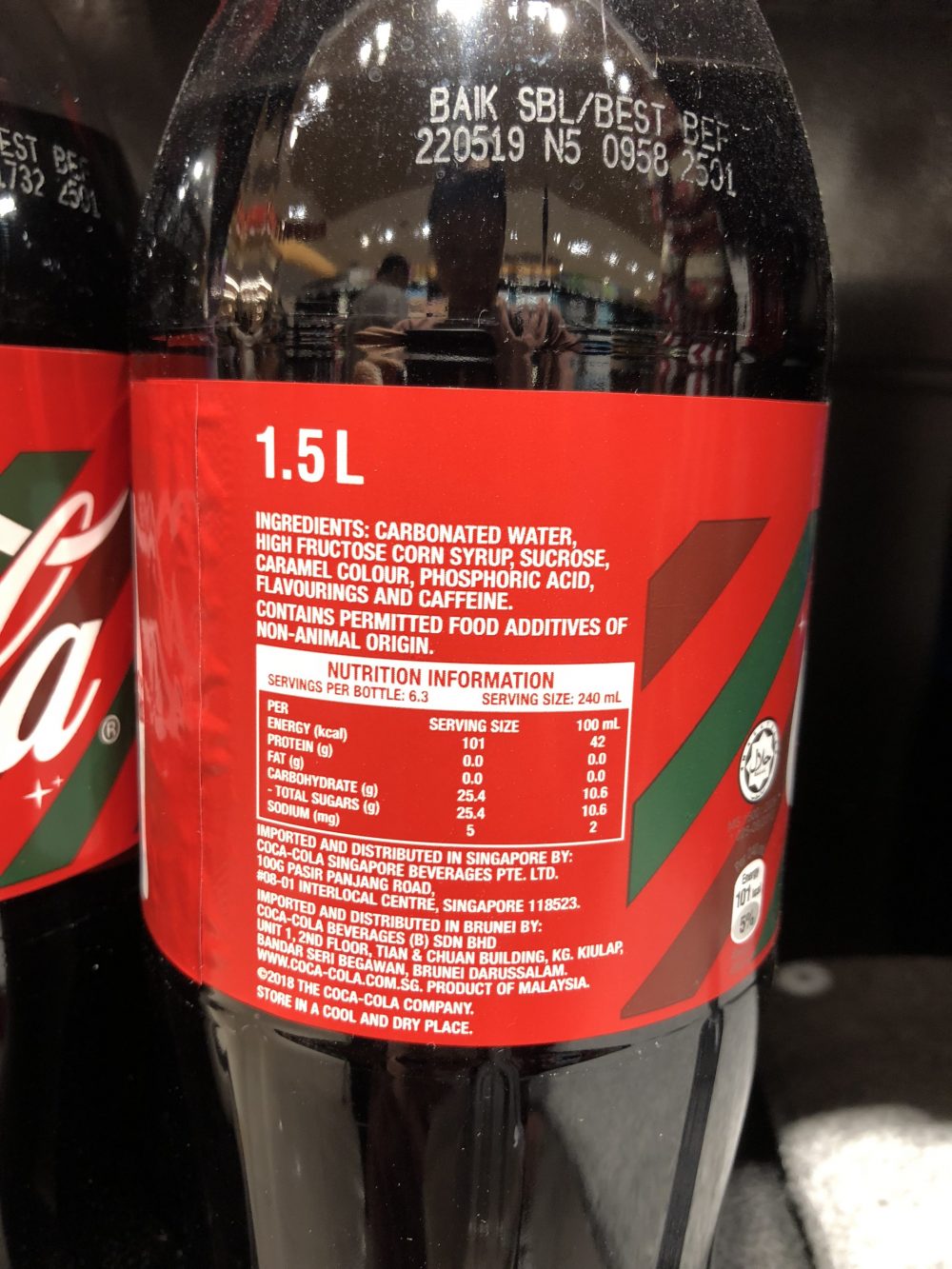 Regular Coca-Cola with high fructose corn syrup (Photo by Olivia Lin)
Regular Coca-Cola with high fructose corn syrup (Photo by Olivia Lin)
Another alternative: Honey
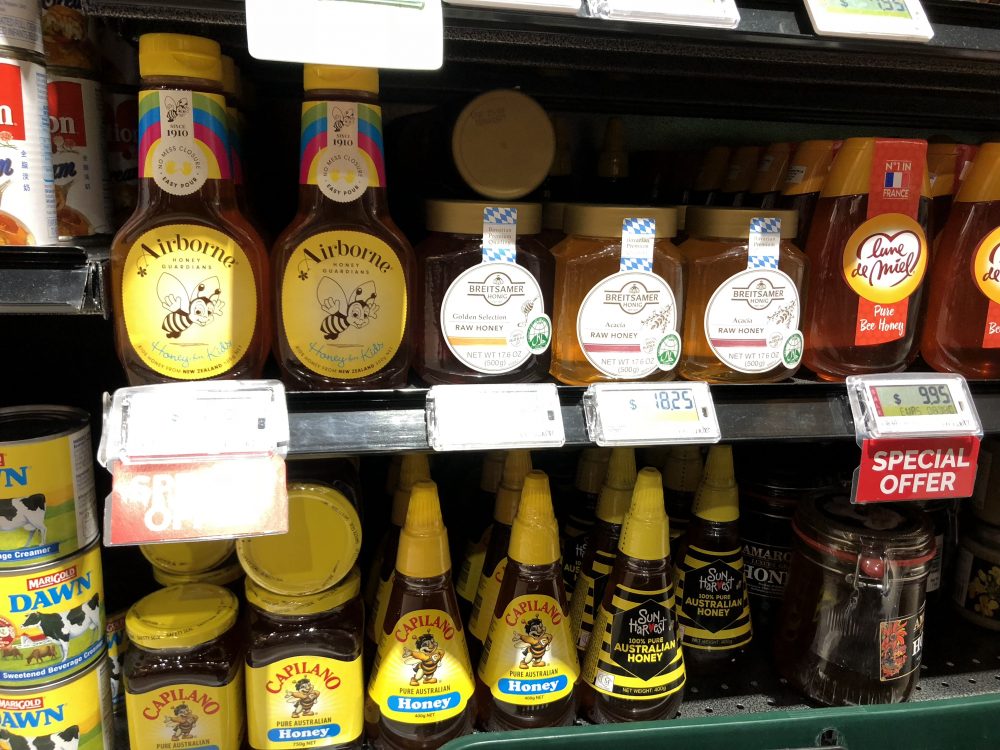 Photo by Olivia Lin
Photo by Olivia Lin
Honey is also often used as a substitute for sugar. And like all other ingredients, it has both good and bad parts.
The good:
Honey has a lower glycemic index (GI) compared to sugar, which means it's slower in increasing blood sugar levels. It also contains more nutrients.
The not so good:
On the other hand, honey has more calories, which means that weight watchers still need to control their honey intake very carefully.
Make better decisions
Okay perfect, now that you kinda know which ingredients can be found in which products, hopefully you'll make better decisions at the supermarket.
Or y'know, you could always just drink water.
And eat vegetables.
All images by Olivia Lin.
If you like what you read, follow us on Facebook, Instagram, Twitter and Telegram to get the latest updates.
